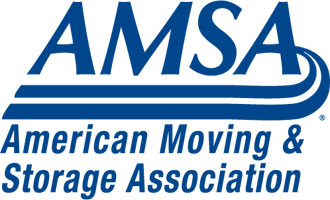Moving to a new office space is just as involved a process as moving to a new home. You’ve got big, bulky office furniture, difficult-to-pack electronics, and multiple rooms worth of knick-knacks to get packed up. And usually, there’s not a whole lot of time to get it all done (you can’t exactly shut down operations for a week to sort things out). Whether you’re moving to a new floor or across the country, office relocation is a lot of work, regardless of the size of your company. If you’re trying to navigate one, use this our timeline and checklist as your guide to moving to a new office space.
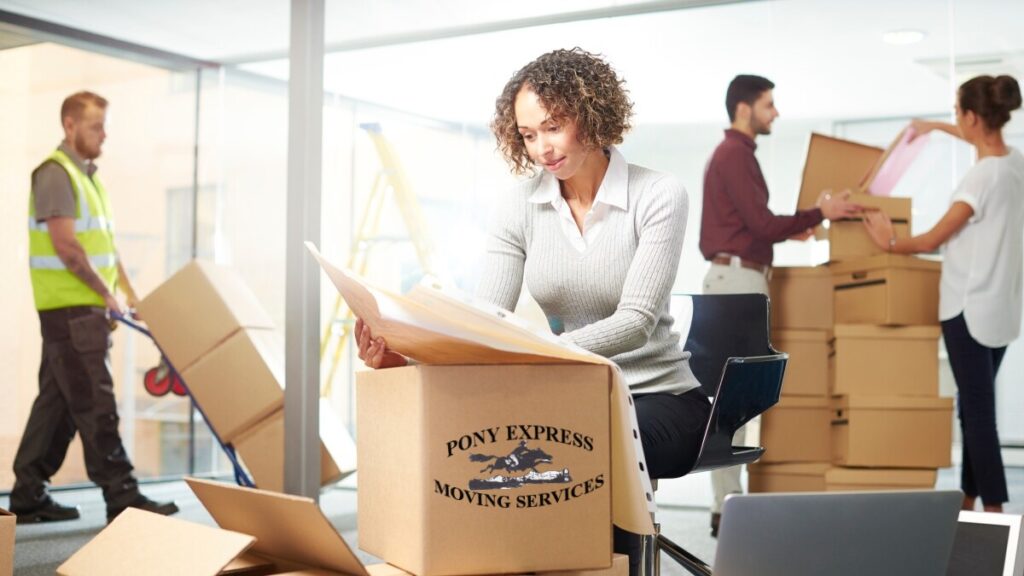 Office move planning can start as early as a year before your move date, but six months is typically when you start looking for relocation services and start planning the logistics of a business move. Here is our step-by-step timeline to help you stay organized.
Office move planning can start as early as a year before your move date, but six months is typically when you start looking for relocation services and start planning the logistics of a business move. Here is our step-by-step timeline to help you stay organized.
6 months before your move
Here’s what you need to consider six months before an office move.
Review the current lease
If the lease for your current office isn’t up yet, will you lose your deposit? What repairs do you need to do before you hand the key over to the landlord? Are you responsible for property damage such as broken lights or chipped paint?
Designate an in-office moving team
Do you want to be involved in every aspect of the moving process or just some? Are you the point person or should you assign that responsibility to someone else on your team? Delegate some tasks to your moving project management team, clearly defining roles. Who is planning, packing, unpacking, organizing, decorating?
Make a decommissioning plan
Decommissioning goes way beyond just cleaning your old office. Decommissioning is more like restoring it to its original condition before you moved in. It includes removing cables and electrical installations, fixtures, signs and logos, furniture, and so on. It also involves repairs to the property damage and even small things like replacing burnt-out lightbulbs. Your lease should specify the details, and if you don’t want legal trouble or to lose your security deposit, the lease conditions must be adhered to. Make a decommissioning plan early and discuss with your moving team how to assign related tasks.
Set a budget
You might have to adjust it down the road, but at least having some idea from the get-go how much you’ll have to spend will be immensely helpful when you talk to the moving companies. Determine what your non-negotiables are, and think about where you can scale back to save some money. Also, consider the purchasing process. Who will make all the move-related purchases and how will the vendors be paid?
Decide on the level of moving coverage
Professional moving companies offer at least one type of coverage called released value protection. It’s basic, however, at up to 60 cents per pound. This moving insurance is federally mandated and is included in the move but will only cover so much. You can always replace damaged furniture, but what is something more crucial to your continued business operations, like electronics? It pays to be protected. Think whether you should buy full value protection coverage, which offers significantly more protection, or expand mover coverage further by buying third-party insurance. Deciding on what type of insurance you’ll need will help budget the move more accurately and also communicate your moving-insurance needs to the moving companies.
Start a to-do list
Since more than one person will be involved in planning and organizing the office move, it’s a good idea to start a box or a folder with all your notes and lists. It’s even better if it’s done online. For example, as a collection of Google docs in a simple folder on Google Drive. Centralizing information is a good strategy.
Announce the move to your employees and seek feedback
Plan to send an email and then follow up with an in-person or online meeting. The email should include the new office address, moving date, key features of the new office, the reason for the move, and key dates for the moving process employees should be aware of. After a week or two, schedule an in-person meeting, if possible (or employees can attend remotely), to receive feedback and answer any questions.
Your employees might request changes in workspace needs or work style preferences, especially if the new office has both open and private floor plans. If your company is small, consider one-on-one meetings. If it’s large, and holding a meeting that everyone can attend is not feasible, you can try sending a survey or organizing department meetings. Encourage all employees to keep the move in mind when they plan or take on new projects.
Make sure everything will fit in the new office
While you may intend to bring that massive break-room fridge with you, the dimensions of the kitchen space in your new break-room might not allow for it. Instead of wasting time, energy and money on transporting items that aren’t going to work in your new office space, get the dimensions of your largest items and compare them to the measurements of your next location. This applies to things like your conference room tables, large electrical equipment, and anything else that necessitates a lot of space. Hopefully, you have chosen a new office that allows for the accommodation of your existing furniture and tech, but if you haven’t, you’ll want to know that before you move in — not after.
Make an inventory
Now that you know what will and won’t fit, record what you’re taking and what you’re leaving behind. Even if you’re on a tight budget, you might have to leave some things behind, especially if the new office’s floor plan is different. A full inventory will help you communicate your moving needs to your moving coordinator and will give you a clear picture of the items you’ll need to leave behind (and replace them after the move if necessary).
3-4 months before your move
Here’s what you need to do three to four months before an office move.
Lock in your moving date
By now you have price-compared and settled on one moving company. Make a reservation as soon as you can to secure the date.
Solidify your moving plan
Set dates and tasks for your moving plan. Think about when are the phones getting disconnected. When do the desks need to be cleared? Figure out when the internet connection getting set up in the new office. Assign team leaders and hand out responsibilities to team members (or have the team leaders do it).
Announce the moving date to your employees
Let your employees know the moving date. Communicate your expectations of when their cubicles, offices or workstations need to be packed up, when the utilities are getting disconnected, and so on. If you expect the employees to lift any boxes, ask them if there are any health restrictions. Make sure each employee knows what’s expected of them and when.
Notify your current landlord
As soon as you confirm your company’s move date, tell your current landlord or property manager when you plan to terminate your lease.
Notify outside the company
Let your partners, clients, vendors and anyone else you have business associations with that you’re moving. They will need to know your new contact information and might have questions about how the move will affect them.
Come up with a plan for specialized equipment
Do you need help moving especially heavy equipment or hazardous materials? Order ahead items that take a while to build and ship? Are you replacing or upgrading any specialized equipment that requires special handling?
Hire moving vendors
Even if you hired a full-service moving company that will do the packing and unpacking for you, you might have to seek out other vendors for your move-related needs. If your new office needs landscaping or decorating, now is the time to hire an interior designer. You might also need to hire an office cleaner if the movers or your building don’t offer this service and your current one wouldn’t be able to handle the post-move cleanup.
Start gathering moving supplies
Unless your office already has everything it needs to pack up, or the movers will be packing you, get a head start on purchasing and organizing your packing materials and moving supplies. Chances are your office probably already has a lot of supplies (some boxes, markers, scissors, labels), but you probably still need to source some specialty boxes, packing tape and packing paper. Buy it now. Get creative sourcing your supplies, too. You can get free boxes and other free packing supplies at a lot of places. For more information about what supplies you need, check out our guide to choosing the right moving and packing supplies.
Downsize
Purge with an open mind and tag anything that is going to be sold or donated. Consider an office warehouse sale or arrange a charity to do a free donation pickup.
Talk to your employees again
Surely by now you have made some adjustments to the moving plan and have updates. Continue your ongoing communication with your employees as they will have questions and concerns. Invite questions or feedback by email, send out important moving updates, and remind them of the new office’s features, including anything they need to know about on-site parking, entering the building, access cards, the new neighborhood, and so on.
2 months before your move
Here’s what you need to do two months before an office move.
Design a floor plan
Determine where the office equipment and furniture will go, where the employees will be sitting, and where the common areas will be. If possible, get an idea of where the Ethernet connections and power sockets are so you’ll know where to set up the tech equipment.
Schedule disconnection, transfer and set up services
Set up internet, phone installation and utilities at the new office. Besides water and electricity setup, you might need to set up garbage and recycling pickup or security services. Plan with your IT to set up computers at the new location. Can they do it internally or do they need help from the outside vendors? Let any vendors (landscaping, security, cleaning) servicing your current office know that you will have to discontinue or transfer their services.
Buy new furniture or equipment
If you’re replacing or adding any office equipment and furniture, start purchasing now as it will take to ship and assemble. You might need help with furniture installation, and decorating takes time.
Reserve offsite storage
Reserve a commercial storage unit near your new office if you don’t have room for stuff like old files, holiday decorations and office furniture you don’t need now but might use in the future.
Come up with a company-wide labeling system
You’re your preferred labeling system — numbers, colors, shapes — as long as it’s consistent throughout the office and all employees are using it.
Start packing
The non-essentials you won’t need in the weeks leading to the move can be packed now. Get it out of the way now so you can prioritize important tasks like packing necessities.
Put address change orders in place
It’s better to start updating documents with your new address earlier rather than later, so place your orders for new business cards, letterhead, envelopes, return labels, etc. right when you know your new address. It’s much better to have all of your updated documents on hand before your move than to risk going days or weeks without them in your new space.
Check on the new office
Does it need cleaning? Can you start decorating and bringing the non-essential items you’ve packed?
1 month before your move
Here’s what you need to do one month before an office move.
Keep tagging furniture, equipment and office supplies
It’s a process, so you won’t be done in a day. Check in with your moving team to make sure the tagging is on track and the employees have what they need to pack their desks.
Finalize plans with your moving team
Confirm the move date once again, and see if there’s a need for a moving-day itinerary to coordinate moving logistics.
Order keys and access cards
Order keys and, if using, employee access cards for your new office in advance so they’ll be ready to hand out before the old office closes for good.
Back up data
Back up all important data on your computer, and use hard drive mirroring software to make a copy of your hard drive. That way if something happens to your computers in transit, you can replicate your current hard drive on a new system. You might want to scan some files to digitize them and shred the paper versions to lighten the load.
Coordinate moving truck departure and arrival
Work with your current and new building managers to secure loading and unloading times. If there are loading docks, great, but if parking is limited, or the area has heavy traffic, it might take some planning. Don’t wait till moving day.
Get a handle on building rules
Unless your company owns the building you are moving out of or into, you will need to get a full breakdown of all building rules around relocating. It may be that you are only allowed to move during non-business hours or that you must put in a special request to use the service elevator. Get these rules from building management as early as you can since it will dictate the logistics of moving day.
Try to move some non-essentials on your own first
Simplify moving day by transporting the little stuff as you can, provided there’s an overlap of timing with your new lease. You can make the whole moving process easier by taking over items like plants and bulk office supplies on your own, especially if you can get them set up in their new locations before you officially move in.
Assign everyone the task of packing up their own desk
While you may be having a moving company come in to take care of the big stuff, it will still be a major help to have everyone responsible for their own desk space. Give your staff a heads up on when they’ll need to have their desks packed up, and try to encourage them to do a little bit at a time so nobody is trying to get all packed up at the last minute. You may need to just give your team a couple of hours of time off on the day before the move to get their desks in order.
1 week before your move
Here’s what you need to do one week before an office move.
Update your address
Update the company website, your financial accounts, social media accounts, subscriptions and business listings (Google, Yelp, local directories) with your new office address. Not sure who else to notify when you move? See our change-of-address checklist. Most items apply to both residential and commercial moves.
Review your moving day schedule with the moving team
Go over what still needs to be done, when the movers arrive, what items should go first and last, who will be on-site to supervise the moving crew, and will lock up after they leave, and whether you will be tipping the movers and providing refreshments.
Remind employees to finish packing
Your IT crew will probably be packing up laptops, monitors and other IT equipment, but all employees should be finishing up clearing their desks and cubicles of office supplies and personal belongings.
Don’t forget IT
One of the biggest complications inherent in moving to a new office space is disconnecting and reconnecting all of your tech. This is a big job, and one that you can’t outsource to the movers, so it’s critical that your team gets to work on it as early as possible. If there are pieces of equipment that you’ll be getting rid of, set up a plan for recycling or donating them. If you’re planning to recycle unneeded equipment instead, check out the EPA’s resources on where and how to do it right.
The day before your move
Finish packing and labeling
By tomorrow everything should be packed and ready to be relocated. Do a walk-through to make sure that’s the case and do (or have someone else do it) the necessary last-minute packing.
Collect employee access cards and keys
Be sure to collect any company keys, parking passes and access cards to return to the landlord or property manager.
On moving day
Here’s what needs to be done on moving day.
Be at the old office to meet the movers
Make sure you (or someone from your office) are there to let the movers in and out, tip them, and provide refreshments (the last two are optional). Someone also should be there to clear a path for the movers if it hadn’t been done and to moderate the move. This includes letting the movers know what should be loaded first and last, pointing out any fragile boxes (even if they’re labeled), and pointing out what furniture items need disassembling.
Do a final walk-through of your vacated office
This is to see if any items were left behind and to document any property damage. Now is also the time to turn in all keys and parking passes unless you’ve made some arrangement with the property owner or manager. It’s a good idea to confirm the termination of your lease at the same time.
After your move
After your office move is complete, here are some action items to help you get settled in your new office space.
Unpack and test your technology
Unpack the essentials and test your phone, computers, servers, printers, and anything else you’re using. Troubleshoot as needed so you won’t miss any time conducting business.
Double-check your change-of-address updates
Confirm that everyone who needed to know was notified of your move, that your online presence lists the new address, and that any stationery, business cards, labels, etc. you are using have also been updated.
Meet with your post-move team
To make sure that you get back on track promptly and that your place of business looks like a professional office, discuss with your team who is removing tags, who is unpacking, and who is stocking the kitchen, restroom(s) and supply cabinets. They should divvy up those tasks among the employees.
Celebrate your new digs
An office relocation is stressful for everyone, including your employees. They deserve some downtime and recognition for their hard work. As a “thank you” for everyone’s cooperation in making it happen and as a way to celebrate your new space, budget in a small party for after the move. You don’t have to be completely set up yet, and it doesn’t have to be anything major — even a mid-day celebration luncheon sometime in the first week after moving will show your staff how much you appreciate their help and welcome exciting things at the new office.
Office moving FAQs
Moving offices can be daunting, and we are sure you have questions. Here are a few answers to the FAQs.
What is involved in an office move?
Planning and organizing your move involves working with your office’s moving team to go through all the steps required to move your office. These include researching, vetting and finding a moving company experienced in office relocations and working with them on the details of your unique move based on your needs and your budget. It also involves whipping your new office in shape, be it cleaning, decorating or remodeling. You should also leave your old office in the condition it was in before you moved in. Otherwise, you risk losing your deposit and facing legal issues.
Office moves also involve changing your address everywhere you have it on your office supplies and online presence, and letting people know. You will be downsizing once you decide what must come with and what you no longer need or won’t fit into the new office. Of course, a fair amount of packing is involved and working with your employees to make sure they know their tasks and deadlines. Then you have to disconnect, transfer and set up all the tech and utilities, including the internet, electricity, computers, phones, servers, and so on. Post-move, you might have to clean your old office. Then, let the new office setup begin. And, hopefully, after all this, some celebration is in order.
How long does it take to relocate an office?
You can start planning as early as a year ahead, but we recommend beginning the process no later than six months before the move. There’s a lot to be done before the movers show up to load everything up. The actual move should be done within a few hours and up to a day for local moves. For long distances, it depends on how many miles your belongings will have to clock in while on the road, which could take a few days.
How can I successfully move my office?
Provided you follow the timeline above, we recommend that you:
- Start early (six months before the move is ideal)
- Create a moving team and appoint its manager
- Do research to find the best moving company experienced in commercial moving
- Assign employees tasks (like packing up their own desks)
- Have a clear IT disconnect/transfer/setup plan
- Know your new and old building rules
- Put address change orders early on
- Be diligent about labeling your boxes
- Make sure that everything will fit into your new space (and downsize accordingly)
- Move the non-essentials first (and maybe even on your own)
- Have an office party to celebrate the move. You all deserved it!
What are the steps to move my office?
Planning and organizing an office move should start with setting up your budget and determining your moving needs. Then you work on finding and hiring a moving company and working with them and your employees on a moving plan with set deadlines. For more details, see our comprehensive checklist above.
Ready to organize your office move?
Save money with Pony Express Moving Services. Lower prices than traditional moving companies and you don’t have to drive! Free moving quotes.
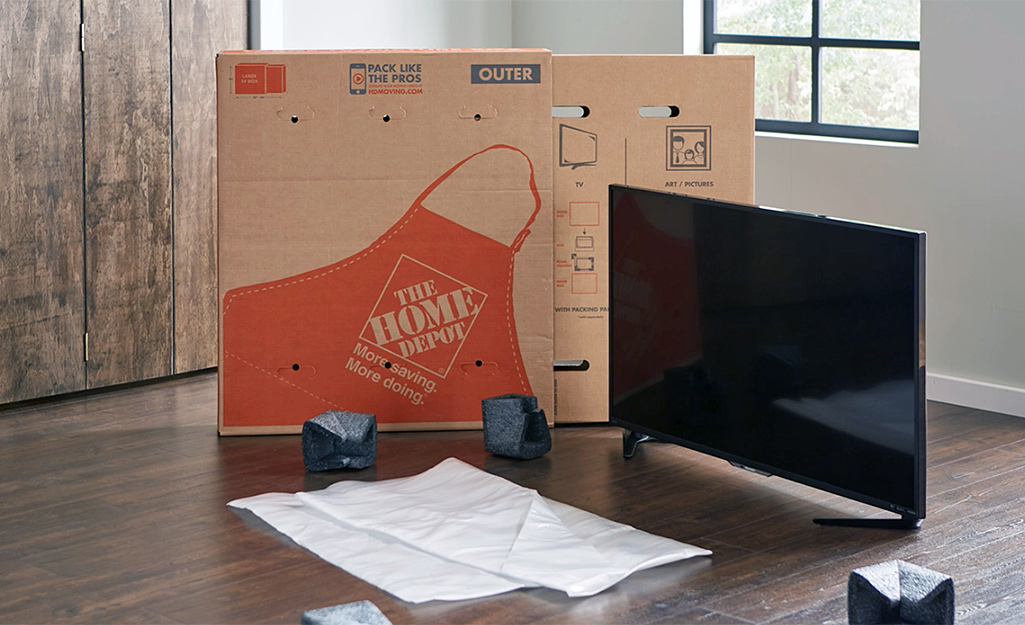 How To Pack A TV For Storage or Moving: Materials, Preparation and Packaging
How To Pack A TV For Storage or Moving: Materials, Preparation and Packaging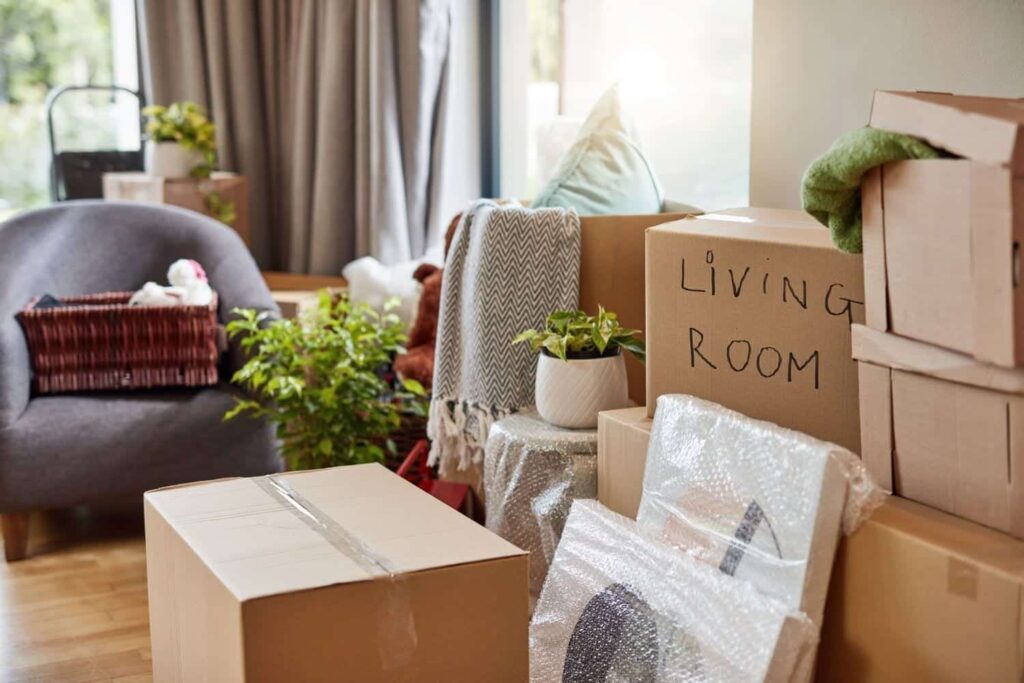 Pony Express Moving Services has been a trusted service provider for years, offering local and long-distance moving and storage services for commercial and residential customers. While spring may be the perfect time to schedule your move, relocation is a complex process at any time of the year. For this reason, our helpful experts at Pony Express Moving Services have gathered together this list of tips to help you make your spring move a whole lot easier.
Pony Express Moving Services has been a trusted service provider for years, offering local and long-distance moving and storage services for commercial and residential customers. While spring may be the perfect time to schedule your move, relocation is a complex process at any time of the year. For this reason, our helpful experts at Pony Express Moving Services have gathered together this list of tips to help you make your spring move a whole lot easier.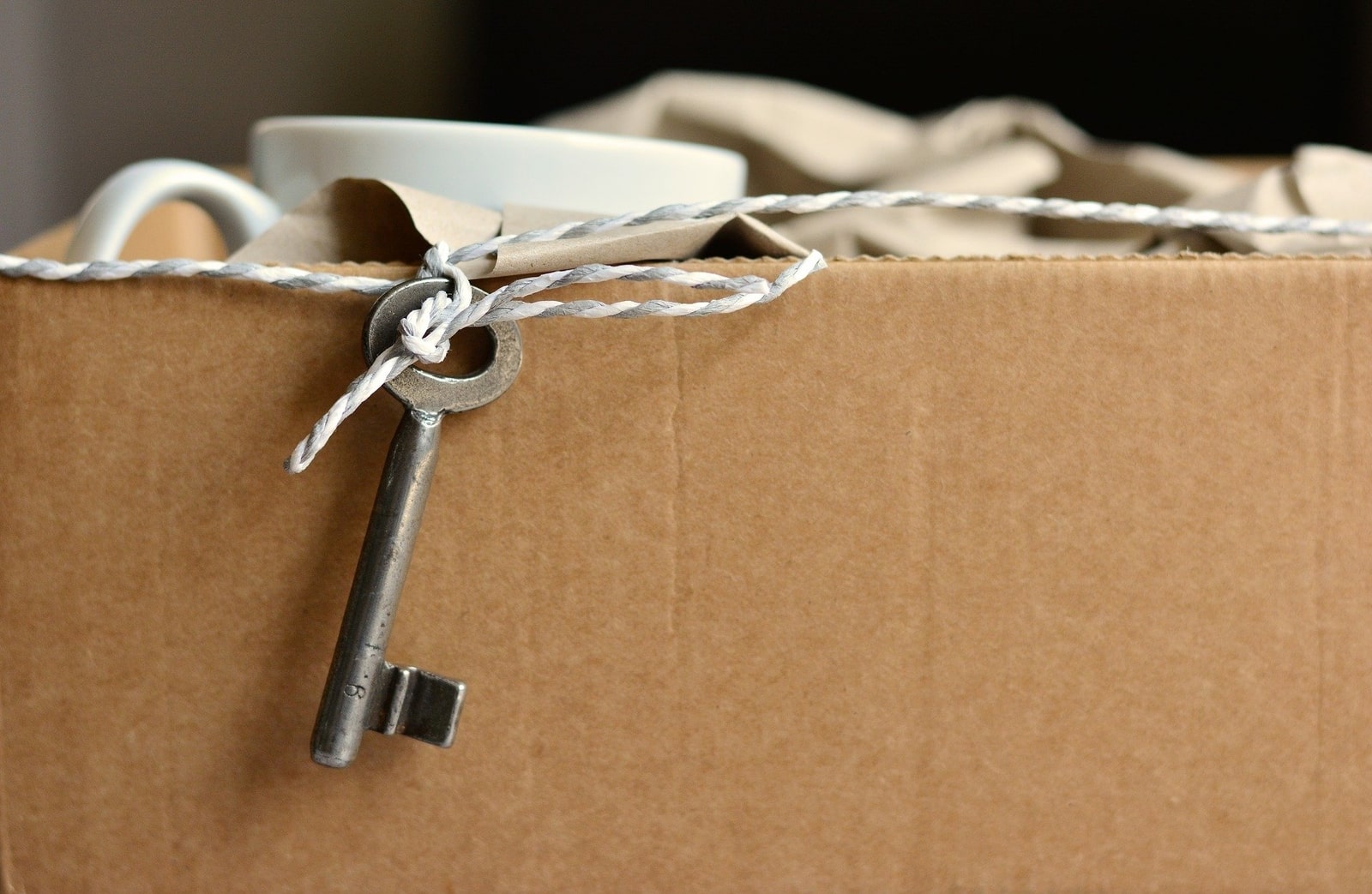
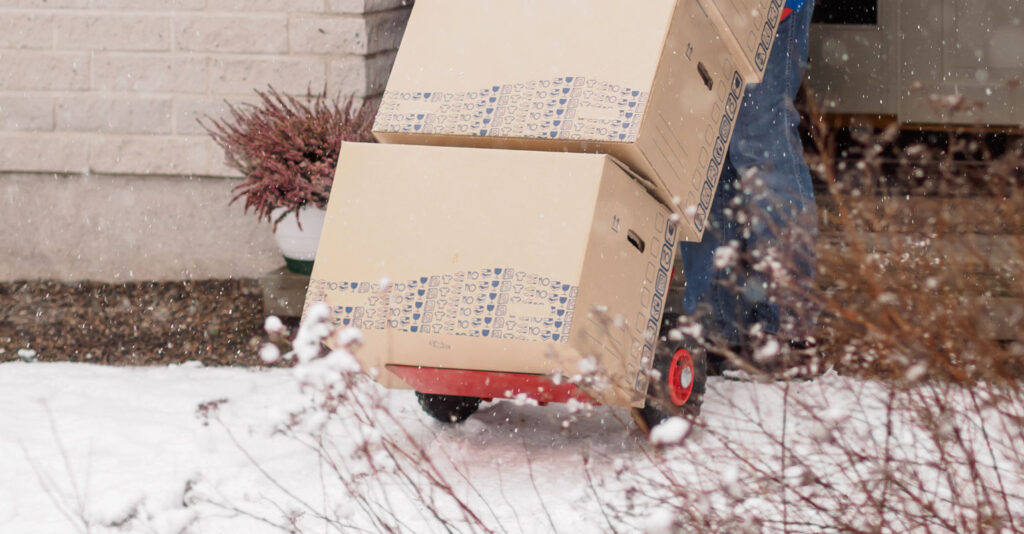 In Boston area, the average daily temperature throughout February has a daily average of being around 41 degrees with a low of 24 degrees. However, keep in mind, we have set record temperatures during this time before with highs being in the upper 60’s, and even posting a negative 3-degree temp at one point in February over the past several years. It can rain, it can snow, it can be sunny, and it can be bitterly cold and windy. Therefore, if you decide to move in February, you need to remember a few things to make this go off without a hitch!
In Boston area, the average daily temperature throughout February has a daily average of being around 41 degrees with a low of 24 degrees. However, keep in mind, we have set record temperatures during this time before with highs being in the upper 60’s, and even posting a negative 3-degree temp at one point in February over the past several years. It can rain, it can snow, it can be sunny, and it can be bitterly cold and windy. Therefore, if you decide to move in February, you need to remember a few things to make this go off without a hitch!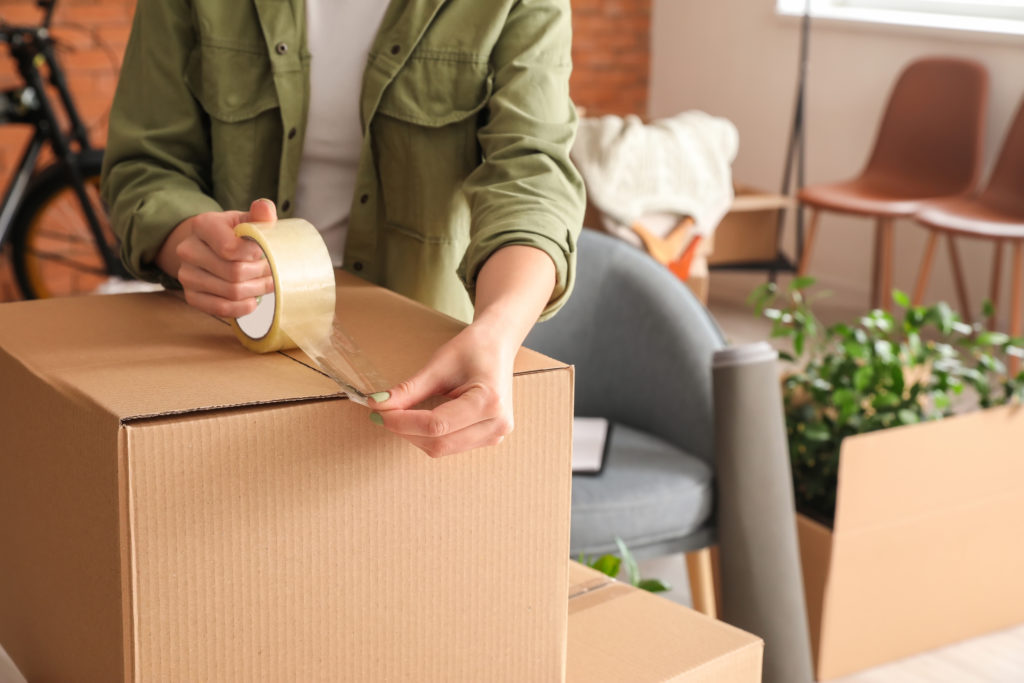
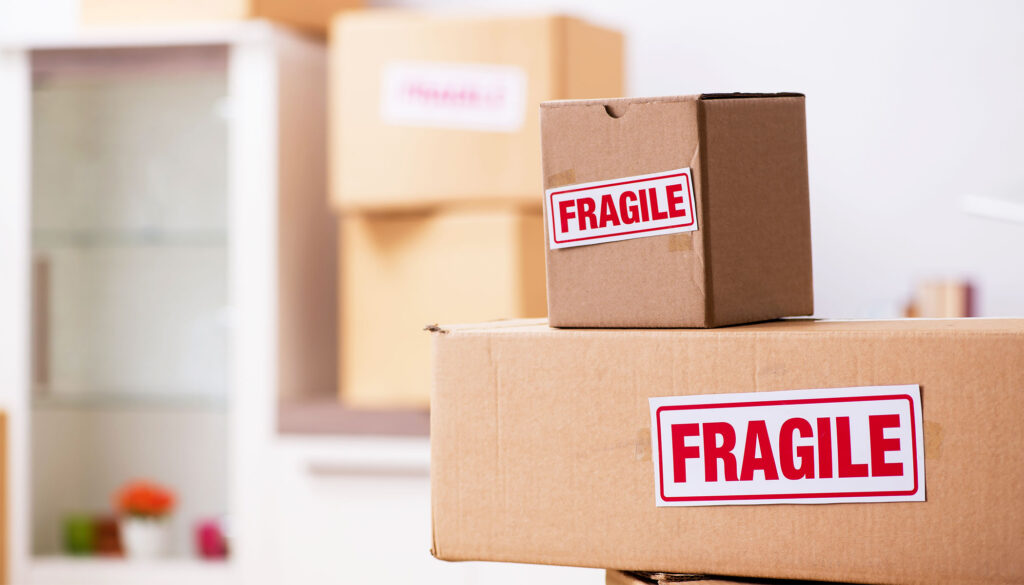 Prepare in advance
Prepare in advance Office move planning can start as early as a year before your move date, but six months is typically when you start looking for relocation services and start planning the logistics of a business move. Here is our step-by-step timeline to help you stay organized.
Office move planning can start as early as a year before your move date, but six months is typically when you start looking for relocation services and start planning the logistics of a business move. Here is our step-by-step timeline to help you stay organized.

 Packing your things should never be an afterthought in your process of moving. It goes without saying that you need to pack smartly to protect your items in transit. You’ll also need to pack (and label) well so that unpacking is a breeze in your new home. The time you save in cutting corners comes back to you tenfold when it’s time to unpack, sort, and settle.
Packing your things should never be an afterthought in your process of moving. It goes without saying that you need to pack smartly to protect your items in transit. You’ll also need to pack (and label) well so that unpacking is a breeze in your new home. The time you save in cutting corners comes back to you tenfold when it’s time to unpack, sort, and settle.
